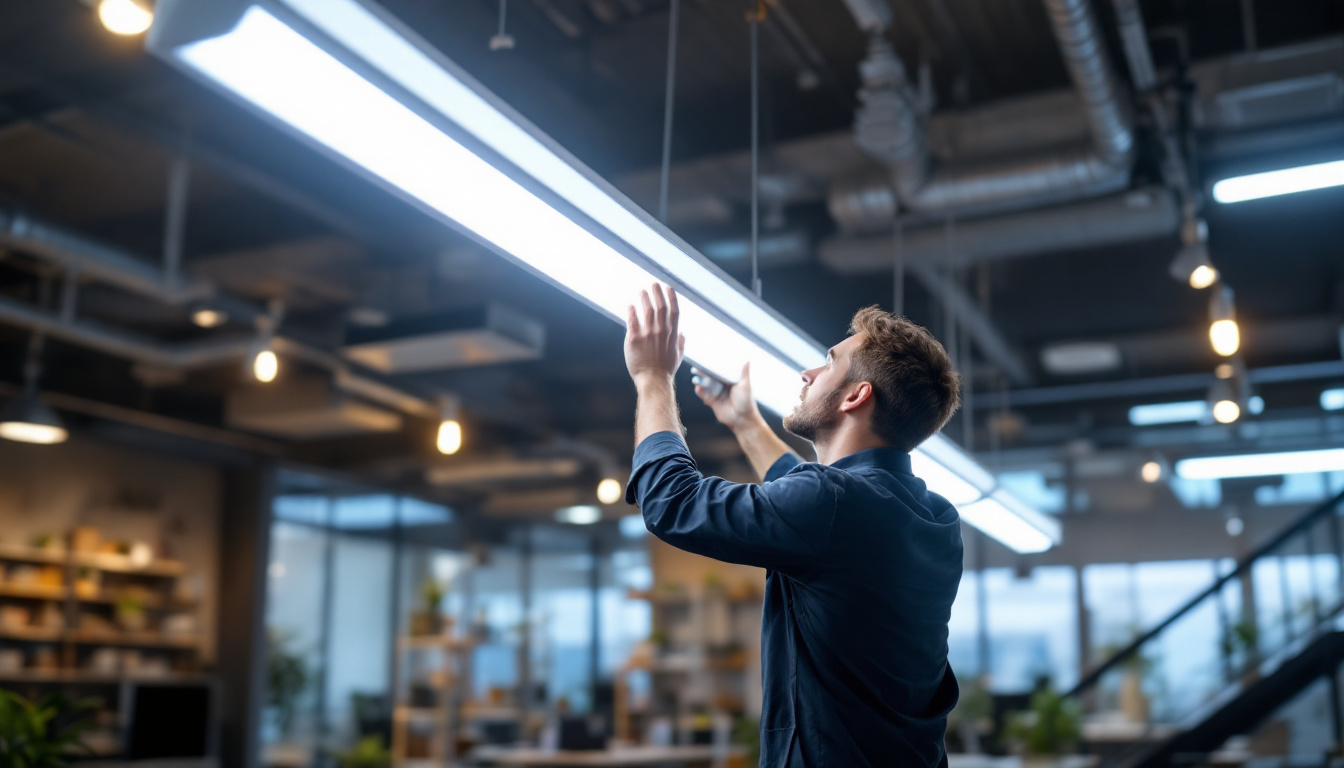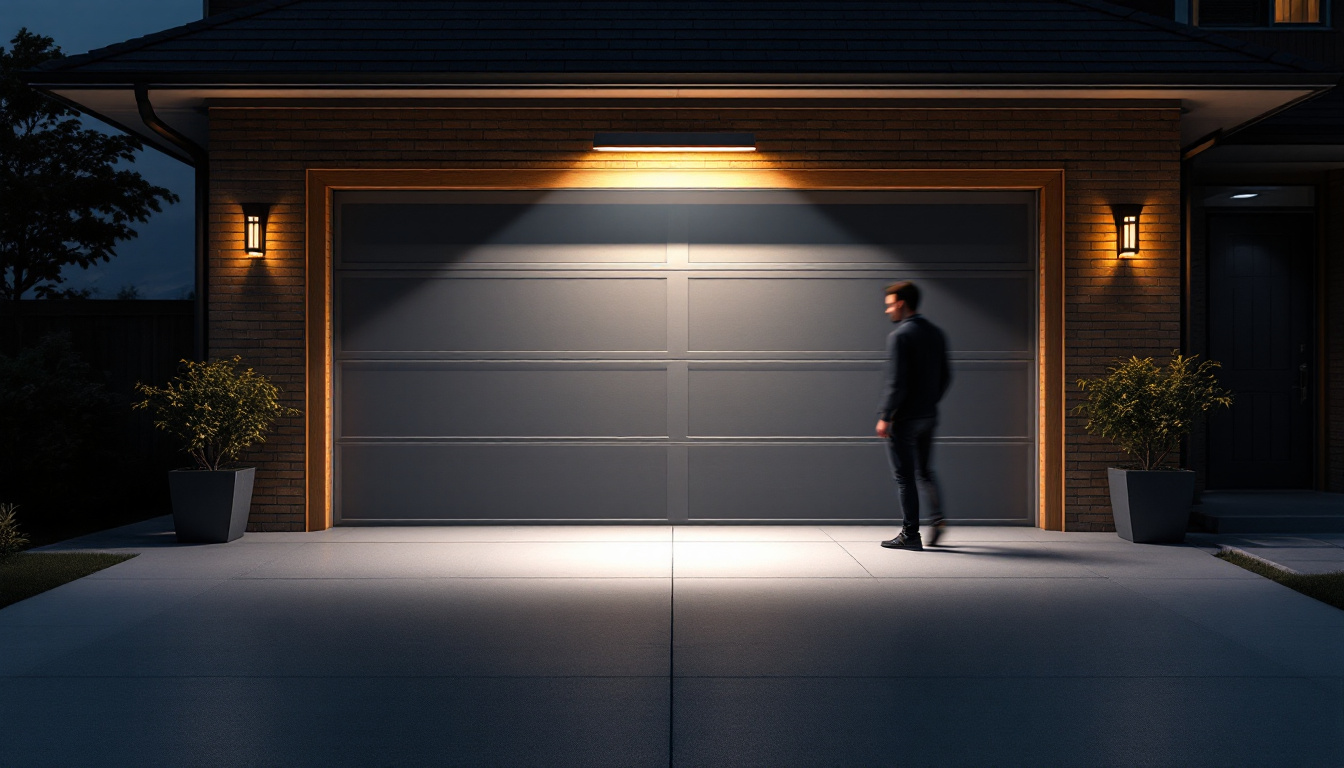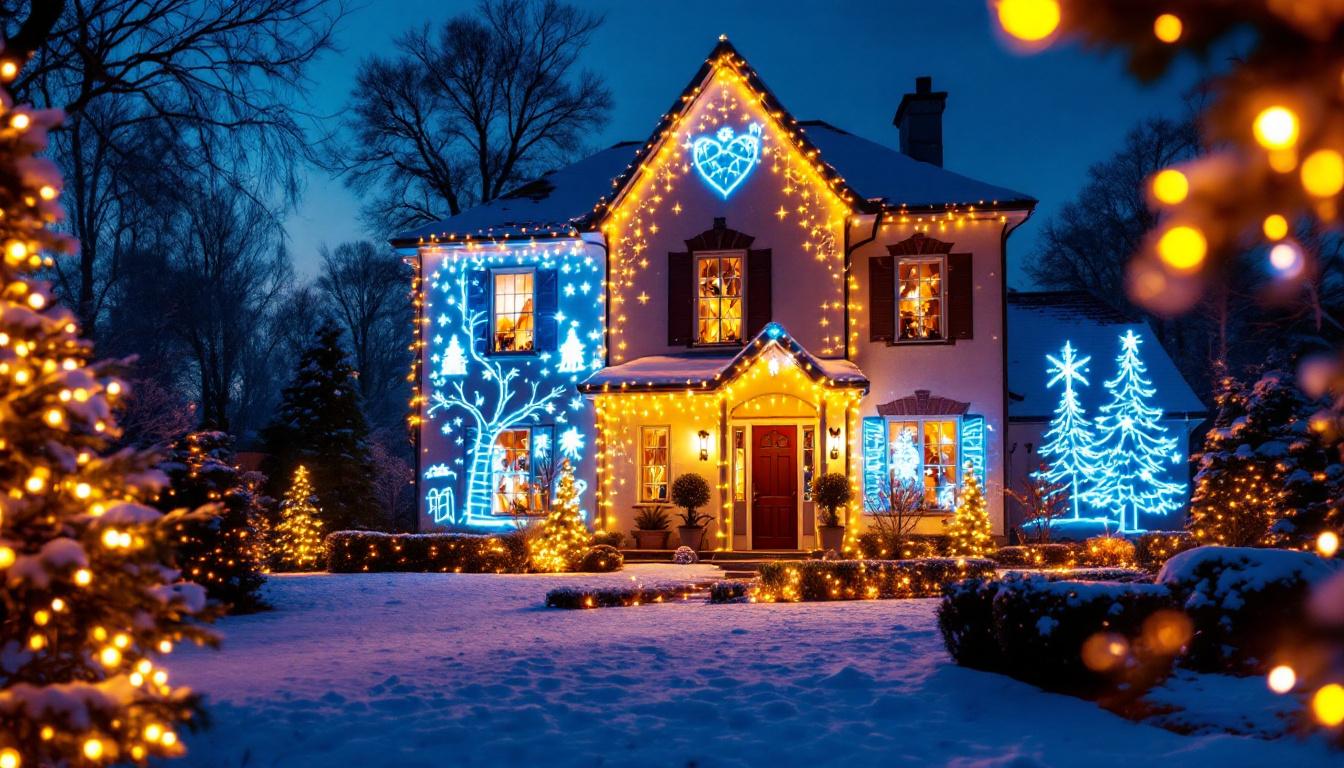
In the ever-evolving world of lighting technology, LED fluorescent light fixtures have emerged as a popular choice for both residential and commercial applications. Lighting contractors play a crucial role in this transition, needing to stay informed about the latest advancements and best practices. This comprehensive handbook aims to equip contractors with the knowledge required to effectively work with LED fluorescent light fixtures, ensuring optimal performance and customer satisfaction.
LED fluorescent light fixtures combine the energy efficiency of LED technology with the familiar form factor of traditional fluorescent lights. These fixtures are designed to replace conventional fluorescent tubes, offering significant advantages in terms of energy consumption, longevity, and light quality.
LED fluorescent light fixtures utilize light-emitting diodes (LEDs) instead of gas-filled tubes to produce illumination. They are available in various shapes and sizes, making them versatile for different applications. Unlike traditional fluorescent lights, which require a ballast to operate, many LED fixtures come with integrated drivers, simplifying installation and reducing maintenance needs. This feature not only streamlines the setup process but also minimizes the risk of component failure, which is often a concern with older fluorescent systems that rely on separate ballasts.
The advantages of LED technology in fluorescent fixtures are numerous. First and foremost, energy efficiency is a significant factor. LED fixtures consume up to 75% less energy than traditional fluorescent lights, leading to substantial cost savings over time. Additionally, LEDs have a longer lifespan, typically lasting between 25,000 to 50,000 hours, which means fewer replacements and reduced waste. This longevity not only contributes to lower operational costs but also aligns with sustainability goals, as fewer lights in landfills translate to a smaller environmental footprint.
Another key benefit is the quality of light produced. LED fluorescent fixtures offer better color rendering and can be designed to emit a range of color temperatures, allowing for tailored lighting solutions that enhance the aesthetics of any space. For instance, in a retail environment, warmer color temperatures can create an inviting atmosphere, while cooler tones are often preferred in office settings to promote alertness and productivity. Furthermore, with advancements in dimming technology, many LED fixtures can be adjusted to suit various moods and activities, providing flexibility that traditional fluorescent lights simply cannot match.
Moreover, LED fluorescent light fixtures are known for their instant-on capabilities, eliminating the flickering and warm-up time often associated with fluorescent tubes. This feature is particularly beneficial in settings where immediate illumination is crucial, such as in emergency exits or security lighting. Additionally, many LED fixtures are designed with advanced thermal management systems that help dissipate heat effectively, ensuring consistent performance and further extending the lifespan of the lights. As a result, these fixtures not only enhance the functionality of a space but also contribute to the overall safety and comfort of its occupants.
When selecting and installing LED fluorescent light fixtures, several critical considerations must be taken into account. Understanding these factors will help contractors deliver high-quality results that meet client expectations.
One of the primary considerations is the compatibility of LED fixtures with existing lighting systems. Contractors should assess whether the new fixtures can seamlessly replace traditional fluorescent lights without requiring extensive rewiring. Many LED fixtures are designed to be direct replacements, making installation straightforward and cost-effective. Additionally, it’s important to consider the physical dimensions and mounting options of the new fixtures to ensure they fit well within the existing infrastructure. This can prevent unnecessary delays and additional costs during the installation process.
Evaluating the light output and distribution is essential for achieving optimal illumination in any space. Contractors should consider the lumen output of the LED fixture, as well as the beam angle, which affects how light is spread across the area. A well-designed lighting layout will ensure that spaces are adequately illuminated while minimizing shadows and dark spots. Furthermore, understanding the color temperature of the LEDs can enhance the ambiance of a room; warmer tones may be more suitable for residential settings, while cooler tones might be preferred in commercial environments. This attention to detail can significantly impact the overall aesthetic and functionality of the space.
Energy efficiency ratings, such as the Energy Star certification, are crucial indicators of a fixture’s performance. Contractors should prioritize fixtures that meet or exceed these standards, as they not only provide better energy savings for clients but also contribute to sustainability goals. Understanding the efficiency ratings will enable contractors to make informed recommendations to their clients. Additionally, it’s beneficial to educate clients on the long-term cost savings associated with energy-efficient lighting, including reduced utility bills and lower maintenance costs due to the longer lifespan of LED fixtures. This knowledge empowers clients to make decisions that align with both their budget and environmental values.
Proper installation is vital to ensure that LED fluorescent light fixtures perform optimally and have a long lifespan. Following best practices can help contractors avoid common pitfalls and enhance the overall quality of their work.
Before beginning any installation, thorough preparation and planning are essential. Contractors should conduct a site assessment to determine the specific lighting needs of the space. This includes evaluating existing fixtures, understanding the layout, and identifying any potential obstacles that may affect installation.
Creating a detailed installation plan can help streamline the process and ensure that all necessary tools and materials are on hand. This proactive approach minimizes delays and enhances efficiency during the installation phase.
Safety should always be a top priority when working with electrical fixtures. Contractors must adhere to local electrical codes and regulations to ensure compliance. This includes proper grounding, circuit sizing, and ensuring that the fixtures are rated for the intended use.
Additionally, using personal protective equipment (PPE) and following safety protocols can help prevent accidents during installation. Contractors should also be aware of the specific requirements for handling LED fixtures, as improper installation can lead to performance issues or even damage to the fixtures.
Once the installation is complete, thorough testing is essential to verify that the fixtures are functioning correctly. This includes checking for proper light output, ensuring that there are no flickering issues, and confirming that the fixtures are securely mounted. Quality assurance checks help identify any potential problems early, allowing for timely corrections before the project is completed.
Even with high-quality LED fixtures, maintenance and troubleshooting may be necessary over time. Understanding common issues and their solutions can help contractors provide ongoing support to their clients.
While LED fixtures are known for their longevity, regular maintenance can extend their lifespan and ensure optimal performance. Contractors should recommend periodic cleaning of the fixtures to remove dust and debris, which can impact light output. Additionally, checking for loose connections and signs of wear can help prevent future issues.
Some common issues that may arise with LED fluorescent light fixtures include flickering, dimming, or complete failure. Flickering can often be attributed to incompatible dimmers or poor connections. In such cases, contractors should evaluate the dimming system and replace it if necessary.
If a fixture is dimming or has failed entirely, it may be due to driver issues or thermal management problems. Contractors should be familiar with the components of the fixtures to troubleshoot effectively and replace any faulty parts as needed.
The lighting industry is continuously evolving, with new innovations in LED fluorescent technology emerging regularly. Staying informed about these advancements can give contractors a competitive edge and enhance their service offerings.
smart lighting technology is becoming increasingly popular, allowing for enhanced control and customization of lighting systems. Many new LED fluorescent fixtures are compatible with smart home systems, enabling users to adjust brightness, color temperature, and even create schedules through mobile apps or voice commands.
Contractors should familiarize themselves with these smart solutions, as they can offer clients greater flexibility and energy savings. Understanding how to install and configure smart lighting systems will position contractors as experts in this growing field.
Recent advancements in LED technology have led to improvements in color rendering capabilities. High Color Rendering Index (CRI) LEDs can produce more accurate and vibrant colors, which is particularly beneficial in settings such as retail, art galleries, and healthcare facilities.
Contractors should consider recommending fixtures with high CRI ratings for applications where color accuracy is critical. This knowledge can help differentiate their services and provide added value to clients.
LED fluorescent light fixtures represent a significant advancement in lighting technology, offering energy efficiency, longevity, and superior light quality. For lighting contractors, understanding the intricacies of these fixtures is essential for delivering high-quality installations and maintaining client satisfaction.
By considering factors such as fixture compatibility, light output, and energy efficiency ratings, contractors can make informed decisions that lead to successful projects. Additionally, adhering to best practices during installation and maintenance ensures that fixtures perform optimally over their lifespan.
As the industry continues to evolve with innovations like smart lighting and advanced color rendering, staying informed and adaptable will be key for lighting contractors. Embracing these changes will not only enhance their expertise but also position them as leaders in the lighting industry.
Ready to elevate your lighting projects with the efficiency and brilliance of LED fluorescent light fixtures? At LumenWholesale, we’re committed to providing you with the highest quality, spec-grade lighting products at prices that make sense for your business. Say goodbye to local distributor markups and hello to a vast selection of reliable lighting solutions that meet rigorous industry standards. With the convenience of free shipping on bulk orders, you can trust that you’re getting the best value without any hidden costs. Make the smart choice for your lighting needs and experience Wholesale Lighting at the Best Value with LumenWholesale today.

Discover the essential role garage motion lights play in modern lighting solutions.

Discover how incorporating under cabinet LED lights into your projects can elevate your lighting contracting business.

Discover why lighting contractors should prioritize projected outside Christmas lights this holiday season.

Discover how choosing the best LED lights for your shop can transform your business.